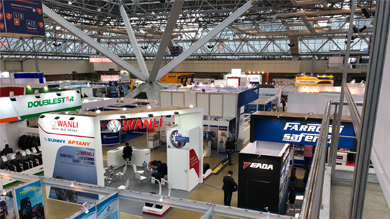- Arabic
- French
- Russian
- Spanish
- Portuguese
- Turkish
- Armenian
- English
- Albanian
- Amharic
- Azerbaijani
- Basque
- Belarusian
- Bengali
- Bosnian
- Bulgarian
- Catalan
- Cebuano
- Corsican
- Croatian
- Czech
- Danish
- Dutch
- Afrikaans
- Esperanto
- Estonian
- Finnish
- Frisian
- Galician
- Georgian
- German
- Greek
- Gujarati
- Haitian Creole
- hausa
- hawaiian
- Hebrew
- Hindi
- Miao
- Hungarian
- Icelandic
- igbo
- Indonesian
- irish
- Italian
- Japanese
- Javanese
- Kannada
- kazakh
- Khmer
- Rwandese
- Korean
- Kurdish
- Kyrgyz
- Lao
- Latin
- Latvian
- Lithuanian
- Luxembourgish
- Macedonian
- Malgashi
- Malay
- Malayalam
- Maltese
- Maori
- Marathi
- Mongolian
- Myanmar
- Nepali
- Norwegian
- Norwegian
- Occitan
- Pashto
- Persian
- Polish
- Punjabi
- Romanian
- Samoan
- Scottish Gaelic
- Serbian
- Sesotho
- Shona
- Sindhi
- Sinhala
- Slovak
- Slovenian
- Somali
- Sundanese
- Swahili
- Swedish
- Tagalog
- Tajik
- Tamil
- Tatar
- Telugu
- Thai
- Turkmen
- Ukrainian
- Urdu
- Uighur
- Uzbek
- Vietnamese
- Welsh
- Bantu
- Yiddish
- Yoruba
- Zulu
Jul . 27, 2024 17:55 Back to list
Energy Efficiency and Performance Enhancement with Eco Drive Belt Technology for Modern Vehicles
Understanding Eco Drive Belts Efficiency and Sustainability in Motion
In recent years, the global emphasis on sustainability has driven innovation across many sectors, including automotive and industrial machinery. One significant advancement in this domain is the development of Eco Drive belts. These special belts are designed to maximize efficiency and reduce environmental impact, making them an essential component for modern vehicles and machines. This article explores the significance, design, and advantages of Eco Drive belts, highlighting their role in promoting a greener future.
What Are Eco Drive Belts?
Eco Drive belts are specialized belts used in various applications, primarily in vehicles and machinery that require power transmission. These belts are engineered to optimize performance, ensuring that energy transfer is as efficient as possible. By reducing friction and heat generation, Eco Drive belts contribute to lower fuel consumption and, consequently, reduced emissions. They serve as a fundamental part of the drive system, linking components such as engines, alternators, and air conditioning compressors.
The Design Philosophy Behind Eco Drive Belts
The design of Eco Drive belts emphasizes several key factors material selection, manufacturing processes, and overall efficiency. Most Eco Drive belts are made from advanced materials that enhance durability and flexibility. This selection process often incorporates environmentally friendly materials, reducing the carbon footprint associated with production.
Additionally, the manufacturing process of Eco Drive belts is tailored to minimize waste. Innovations such as precision engineering ensure that these belts are produced with minimal defects, thus extending their service life and reducing the need for replacements. This not only conserves resources but also lowers overall operational costs.
Benefits of Eco Drive Belts
eco drive belt

1. Enhanced Fuel Efficiency One of the most significant advantages of Eco Drive belts is their ability to increase fuel efficiency. By reducing energy loss through friction, these belts enable engines to operate more smoothly and efficiently. This translates to fewer trips to the gas station and lower fuel costs for consumers.
2. Lower Emissions As global awareness grows regarding climate change, the need for lower emissions has become paramount. Eco Drive belts play a role in achieving this goal by optimizing engine performance and reducing the amount of harmful gases emitted into the atmosphere. Using these belts can significantly decrease the overall environmental impact of driving.
3. Durability and Long Life Constructed from high-quality materials, Eco Drive belts are designed to withstand wear and tear, ensuring a longer lifespan compared to traditional belts. This durability not only benefits the user by reducing replacement frequency but also contributes to less waste in landfills.
4. Noise Reduction Eco Drive belts are engineered to operate quietly, providing a more pleasant driving experience. This feature is increasingly important in today’s urban environments, where noise pollution is a growing concern.
5. Versatility Beyond automotive applications, Eco Drive belts are utilized in various industrial settings, from manufacturing to energy production. Their efficiency and reliability make them suitable for a wide range of machinery, thereby promoting sustainability across sectors.
Conclusion
Eco Drive belts represent a crucial advancement in the quest for more sustainable automotive and industrial practices. Their design focused on efficiency, durability, and environmental impact exemplifies the kind of innovation needed to address the challenges of climate change. As industries and consumers continue to prioritize sustainability, the adoption of Eco Drive belts will likely increase, playing a significant role in reducing carbon footprints and driving towards a more sustainable future. Embracing these technologies not only benefits users economically but also contributes to the broader goal of environmental stewardship, highlighting the intersection of technology, efficiency, and sustainability in the modern world.
-
Korean Auto Parts Timing Belt 24312-37500 For Hyundai/Kia
NewsMar.07,2025
-
7PK2300 90916-T2024 RIBBED BELT POLY V BELT PK BELT
NewsMar.07,2025
-
Chinese Auto Belt Factory 310-2M-22 For BMW/Mercedes-Benz
NewsMar.07,2025
-
Chinese Auto Belt Factory 310-2M-22 For BMW/Mercedes-Benz
NewsMar.07,2025
-
90916-02660 PK Belt 6PK1680 For Toyota
NewsMar.07,2025
-
drive belt serpentine belt
NewsMar.07,2025

